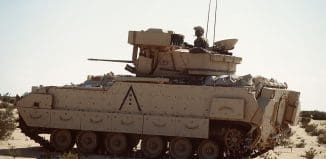Uniform of The Future – Breathable and Protective
This post is also available in:  עברית (Hebrew)
עברית (Hebrew)
In work that aims to protect soldiers from biological and chemical threats, a group of Lawrence Livermore National Laboratory scientists has created a material that is highly breathable, a critical requirement for protective clothing to prevent heat-stress and exhaustion when military personnel are engaged in missions in contaminated environments, yet protective from biological hazards.
This material is the first key component of futuristic smart uniforms that also will respond to and protect from environmental chemical hazards.
The LLNL team fabricated flexible polymeric membranes with aligned carbon nanotube (CNT) channels as moisture conductive pores. The size of these pores: 5,000 times smaller than the width of a human hair.
These membranes also provide protection from biological agents due to their very small pore size. Biological threats like bacteria or viruses are much larger and typically more than 10-nm in size. This theory, of course, has been backed up by testing of the material..
However, according to llnl.gov, chemical agents are smaller in size and require the membrane pores to be able to react to block the threat. To encode the membrane with a smart and dynamic response to small chemical hazards, LLNL scientists and collaborators are surface modifying these prototype carbon nanotube membranes with chemical-threat-responsive functional groups. These functional groups will sense and block the threat like gatekeepers on the pore entrance. A second response scheme also is in development — similar to how living skin peels off when challenged with dangerous external factors. The fabric will exfoliate upon reaction with the chemical agent.
Kuang Jen Wu, leader of LLNL’s Biosecurity & Biosciences Group: “The material will be like a second skin that responds to the environment,” said. “In this way, the fabric will be able to block chemical agents, toxins and biological spores such as anthrax.”
The new uniforms may be deployed in the field in less than 10 years.






























